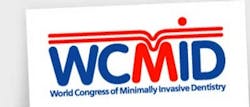The principal mode of action of fluoride, and the other remineralizing agents, is to increase the resistance of enamel to demineralization and to promote remineralization. Fluoride can also inhibit bacterial growth, but usually at concentrations much higher than those found in dental plaque.(2)
Strategies to prevent dental caries involve many mechanisms, including disrupting microbial homeostasis in the oral cavity by the repeated exposure of plaque to low pH following the frequent intake of fermentable dietary carbohydrates. This includes the lower frequency, as well as the intensity of, such acid challenges.
This could be achieved by inhibitors of acid production; avoidance of between meal snacks of food or drinks containing fermentable sugars; and consumption of items that contain alternative sweeteners (such as xylitol) that are not or weakly metabolized by oral bacterial; and stimulation of saliva flow after main meals.
Controlling the bacteria seems a reasonable assumption to make in preventing dental decay. Several studies suggest that antimicrobial treatments may not be optimally effective because of their inability to penetrate into the depths of subclinical lesions, margins of restorations, or pit and fissures. Occluding these inaccessible sites with sealants or bonded restorative materials prior to disinfection may enhance the effectiveness of antimicrobial regimens.
As dental caries with its bacterial agents is an infectious disease, and shows a vertical transmission, the control of bacterial transmission of Mutans streptococci (MS) from mother to child is desirable. Reductions of cariogenic bacteria in mothers for the purpose of interfering or delaying transmission to the child has been shown to reduce both transmission and caries in children.(3) Judicious use of antimicrobials based upon natural aspects of acquisition/transmission may be a more targeted method of shifting the ecological balance from a caries–prone to a non-caries biofilm.
The rationale for use of chemotherapeutic agents for the control or prevention of dental caries dictates a more holistic understanding of the plaque microcommunity.(4) Total suppression of the entire oral flora, without acknowledging the overall effects on ecology, is unlikely to succeed. Chemotherapeutic approaches must be better targeted against specific microbes with the goal of re-establishing an ecologically stable non-cariogenic plaque. In addition, chemotherapy will need to be coupled to mechanical measures to reduce or eliminate reservoirs for re-colonization.
This issue will focus on caries control with: antimicrobial agents, chlorhexidine and essential oils; the role of xylitol; probiotic approachs to caries management; and a caries vaccine.
References
1. Van Houte J. Role of microorganisms in the caries etiology. J Dent Res 1994; 73:672-681.
2. Marsh PD. Microbial Ecology of Dental Plaque and its Significance in Health and Disease. ADR 1994 8: 263.
3. Ercan E, Dülgergil CT, Yildirim I, Dalli M. Prevention of maternal bacterial transmission on children's dental-caries-development: 4-year results of a pilot study in a rural-child population. Arch Oral Biol. 2007 Aug;52(8):748-52. Epub 2007 Feb 23.
4. Caufield, PW. Management Of Early Carious Lesions And Reduction Of Caries Incidence In Caries-Active Or At-Risk Individuals - Antimicrobial Agents. NIDCR comment on the findings of the RTI/UNC review concerning antimicrobials. www.nidcr.nih.gov/NR/rdonlyres/6515EE76.../Page_Caufield.pdf
Additional Reading and Links
1. Trost L and Scarlett MI. Focus on Dental Caries Management. www.dentistryiq.com/index/display/article-display/198033/articles/woman-dentist-journal/volume-2/issue-1/techniques-and-technology/focus-on-dental-caries-management.html. Woman Dentist Journal. Jan, 2004.
2. www.xlear.com/
3. www.wcmidentistry.com/
Sincerely,
Maria Perno Goldie, RDH, MS








